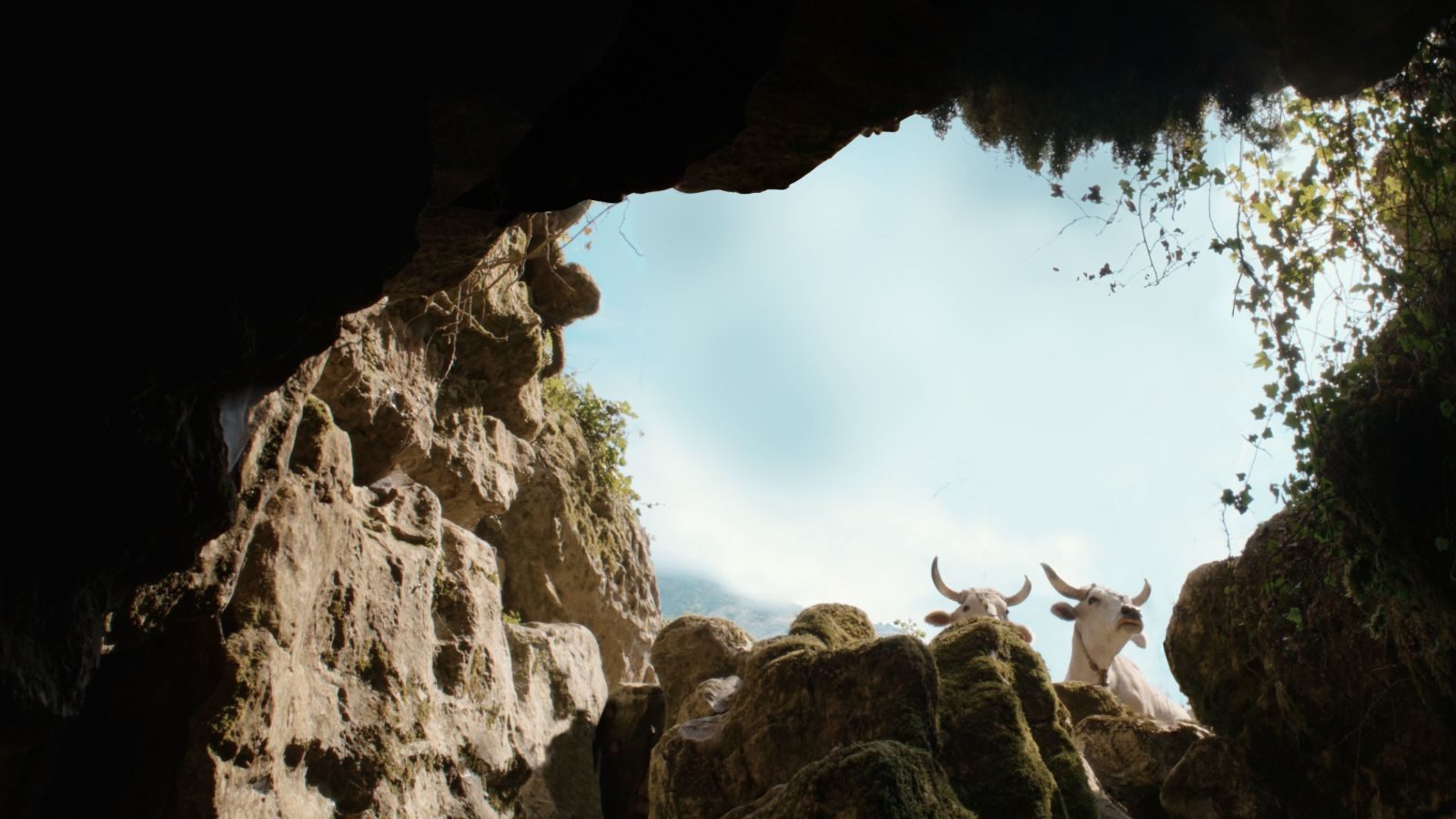Caves… whence we came from––and for Italian auteur Michelangelo Frammartino’s latest work Il Buco––towards which we return. The fixation with caves and speleology in this film hint at the sometimes-regressive nature of that discipline. In human evolutionary terms, it’s like retracing one’s steps: going back towards the darkness, our primitive homes before homo sapiens could colonize other terrains (for better, or rather, for worse). As a candidate for geographical mapping, is there such an urgent sense of utility? Cave complexes such as the Bifurto Abyss in southern Italy, depicted in this film, are a kind of anti-space, comparable to actual “outer space” in their inaccessibility and inhospitality to today’s humans.
But they also loom large in a strand of contemporary thinking and folklore, which Il Buco, in its rigorous and focused dramatization of a particular early-60s caving expedition, isn’t as interested in broaching. The cine-mad pop group Steely Dan have a 1976 track called The Caves of Altamira, sneaking in lyrics reflecting on cave paintings’ proto-cinematic qualities: “Before the fall when they wrote it on the wall / when there wasn’t even any Hollywood.” And of course there’s Plato’s Allegory of the Cave, its shadow puppets on its inner walls a warning to always question the reality we’re given (an inspiration on a certain 1999-released visionary sci-fi blockbuster). Uncut Gems’ opening sequence involves a man-made mine rather than a cave, but it also corresponds to the symbolic sense these examples give to such natural phenomena––Il Buco (directly translating in Italian to “the hole”; keeping its international title in Italian is clearly wise!) rather deigns to show its object of passion with more realism, the sense of wonder deriving from a patient, earthbound authenticity.
To paraphrase the experimental film specialist Michael Sicinski’s observation on Frammartino, works such as Il Buco adopt the perspective of nature itself, untroubled by human interventions. Working with veteran Swiss DP Renato Berta, his camera scans the landscape on an ultra-wide lens and in deep focus, not far from the visual perspective we see when riding a passenger plane, gazing out onto the rapidly beckoning ground from the window seat. The human presences, if present, are tiny specks, almost camouflaged against the other flora and fauna––they lope across the horizon with the impulsivity and rhythm of the animals (cows, sheep, donkeys, and the like) that Frammartino also loves to shoot. And as in his past festival hit La Quattro Volte, he loves a mise-en-scène-oriented livestock sight gag.
The film’s narrative progression patiently tracks the caving expedition, exhaustively recreated from the actual one in August 1961, juxtaposed against everyday rural life in the Calabrian region. It’s partially a very dry comedy of urbane Northern sophisticates, soaking up the “real” Italy in an environment both welcoming and feeling a bit perturbed and condescended to. The villagers sit in the town square and watch a communal television outdoors––in one scene, it depicts the building of Pirelli tower in Milan, a national symbol of the country’s postwar economic miracle. Even though the speleologists are building in the opposite direction to that phallic skyscraper in the North, they’re of the same breed and tendency. And in another bathetic piece of comedy towards film’s end, the final stages of the Bifurto expedition are couched as a kind of pointless hubris.
But the way Frammartino allows us to share in the explorers travails down the cave is its own generosity: a triumph of mobile digital image capturing, and its power to partially illuminate voids of darkness. There’s a difficulty level, and an immersive thrill, feeling the camera as far down, dangling on a precipice, with the filmmakers and “actors”––and for the latter, this resembles a new variation on method acting, with little slippage between acting and “being” (subsisting in the harsh environment). This fulcrum of the film is at once as a daringly minimalist adventure yarn, on the border of the avant-garde––yet it also resembles the most awesome possible educational IMAX film that an enterprising middle-school geography teacher might’ve whisked you to in order to illustrate the wonders of sediment geology.
Il Buco premiered at the Venice Film Festival.

